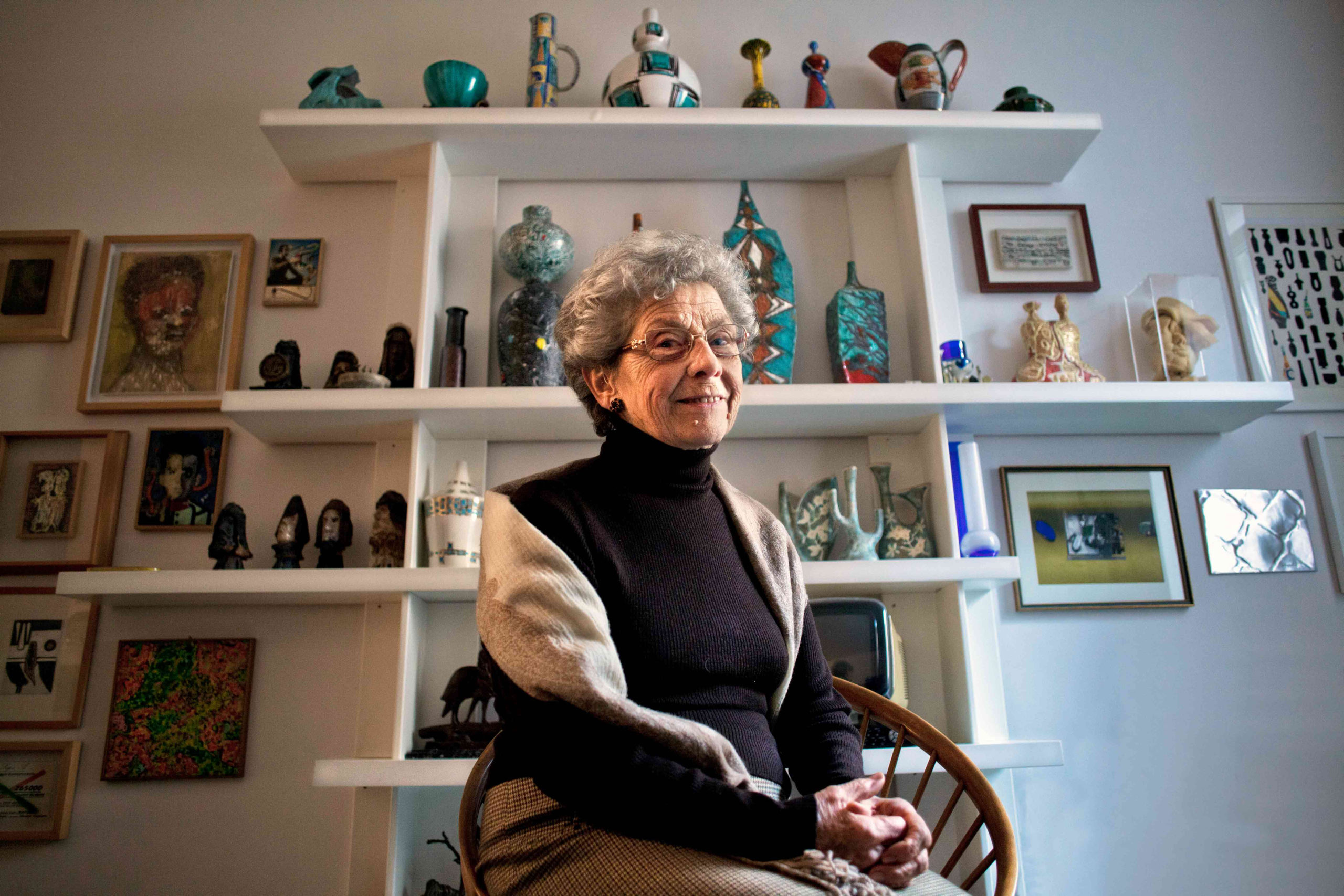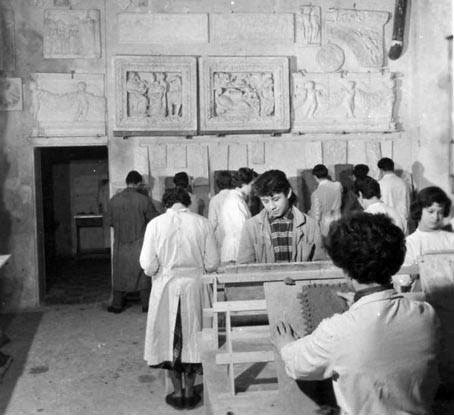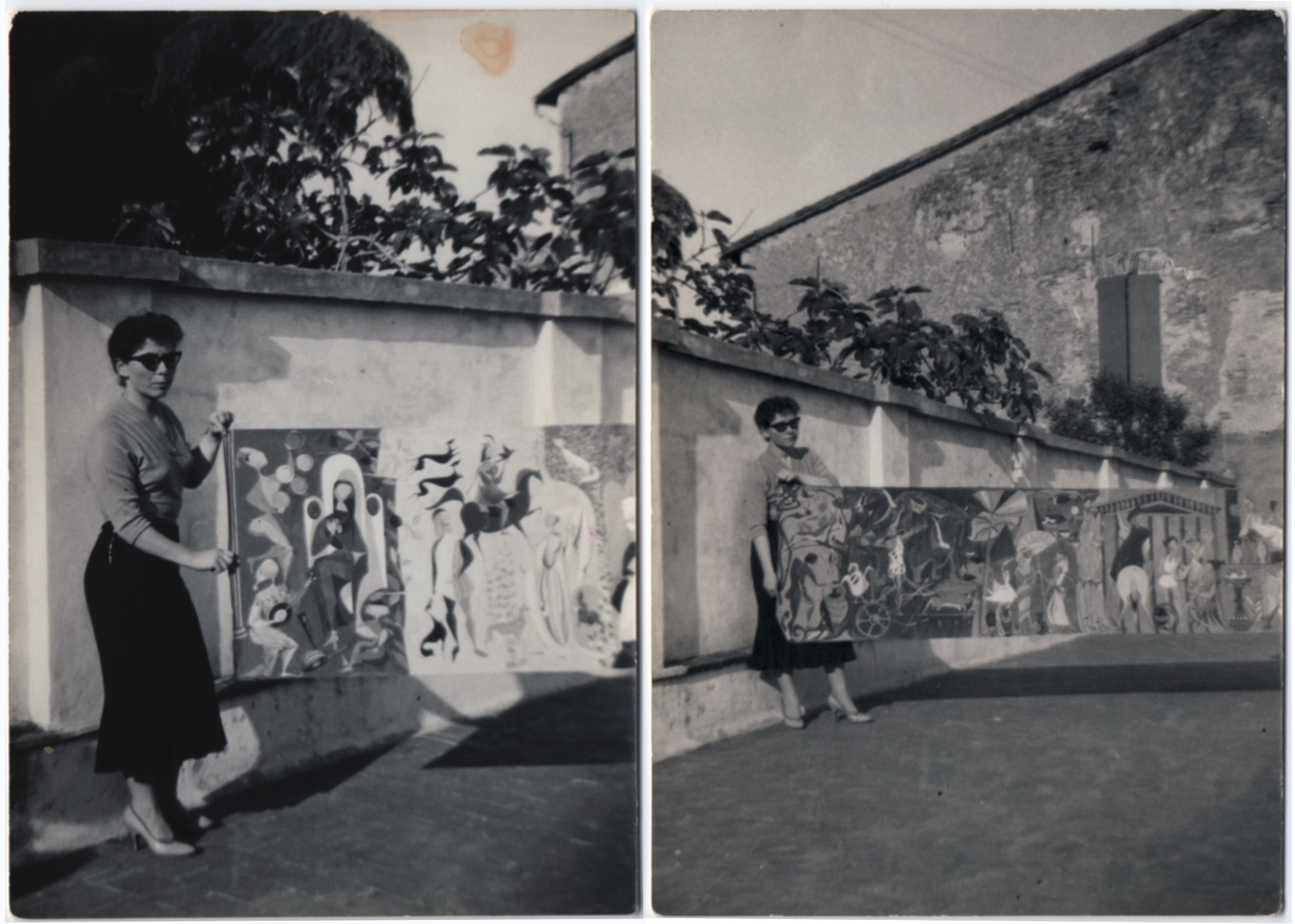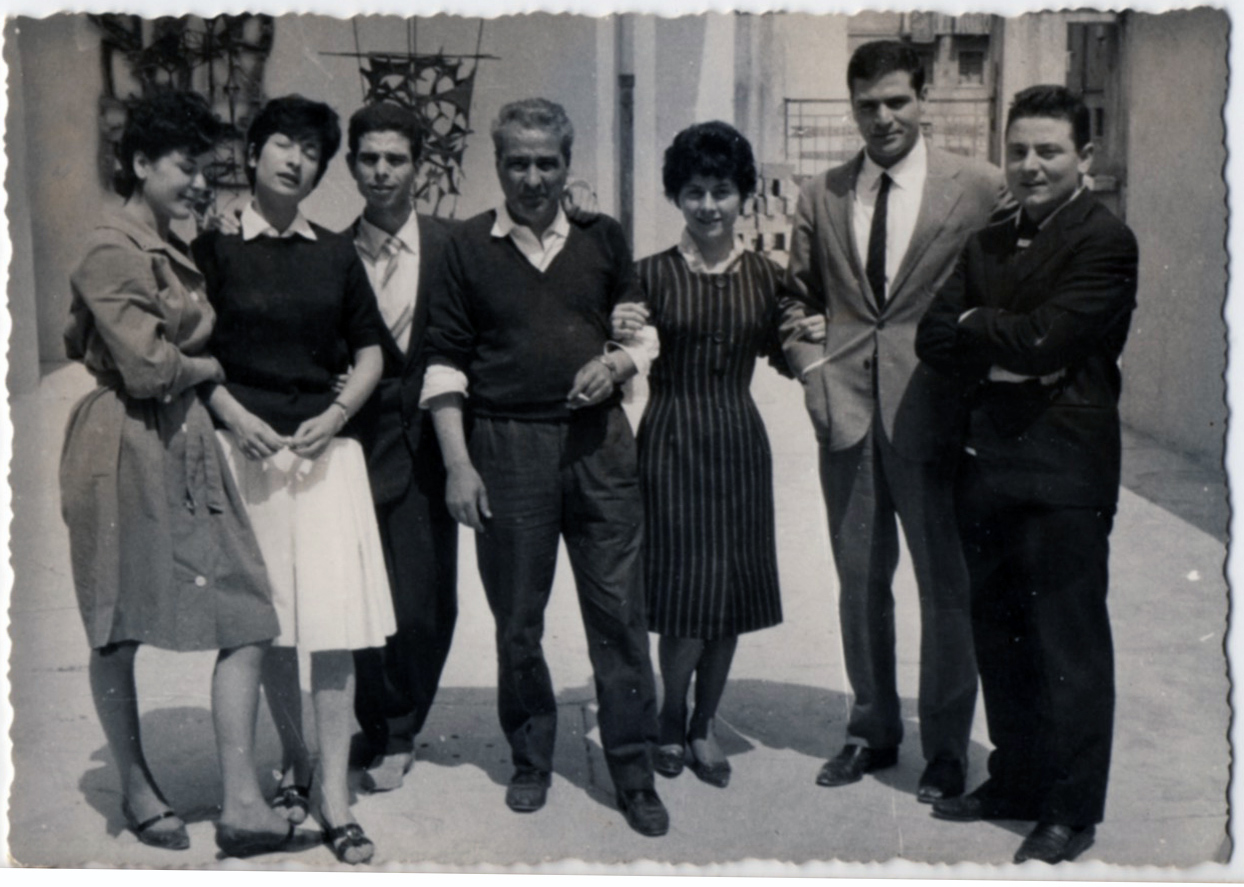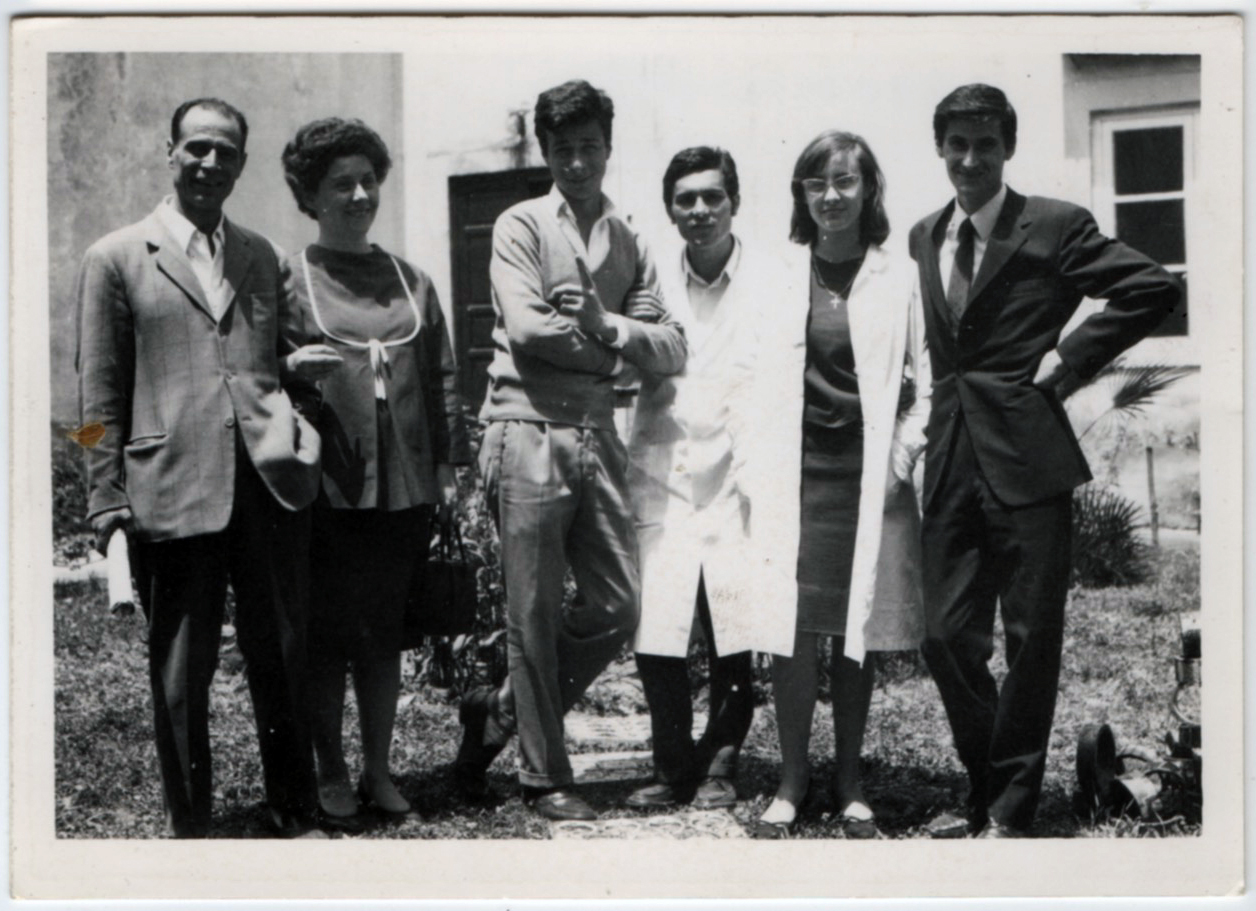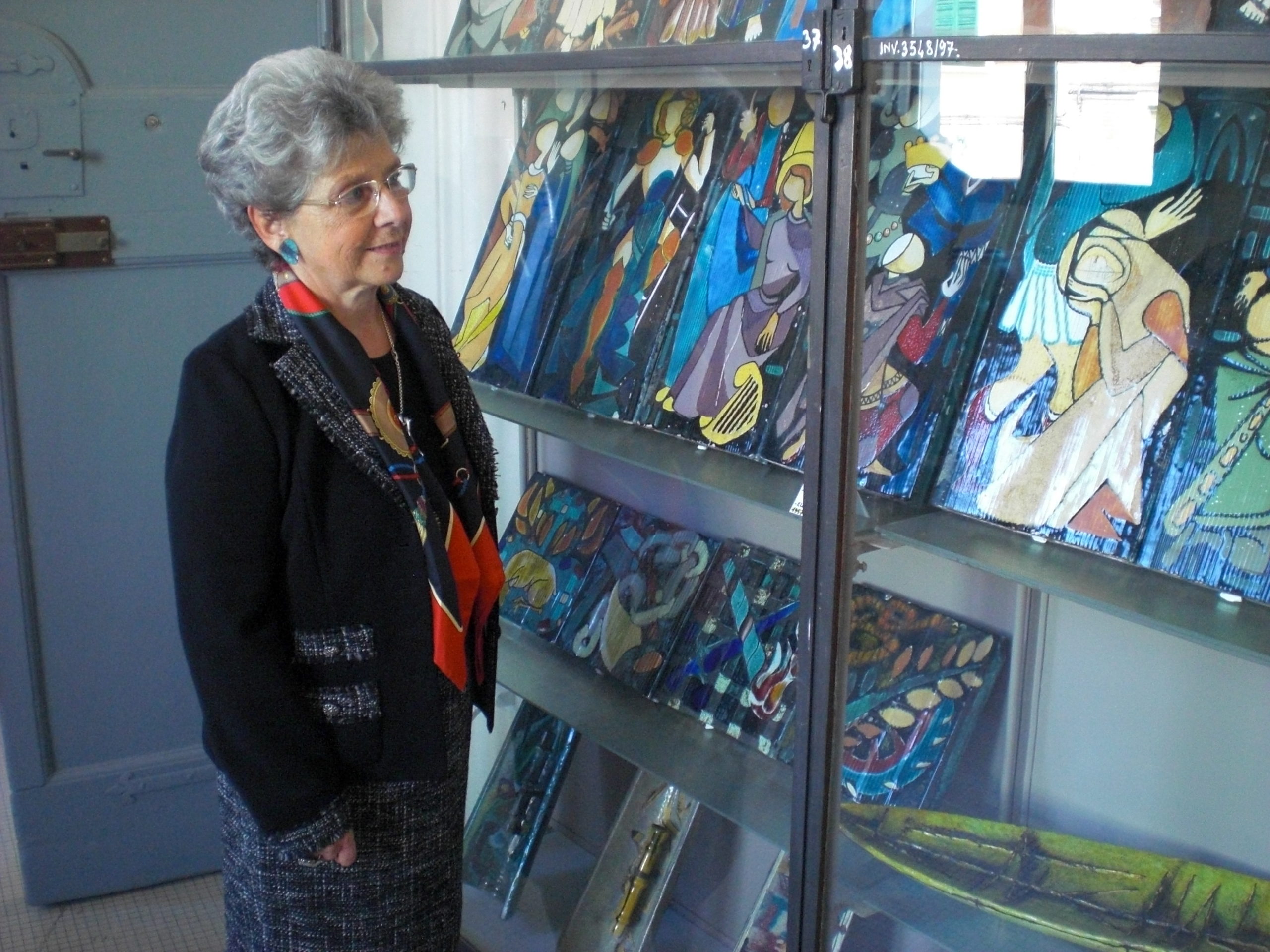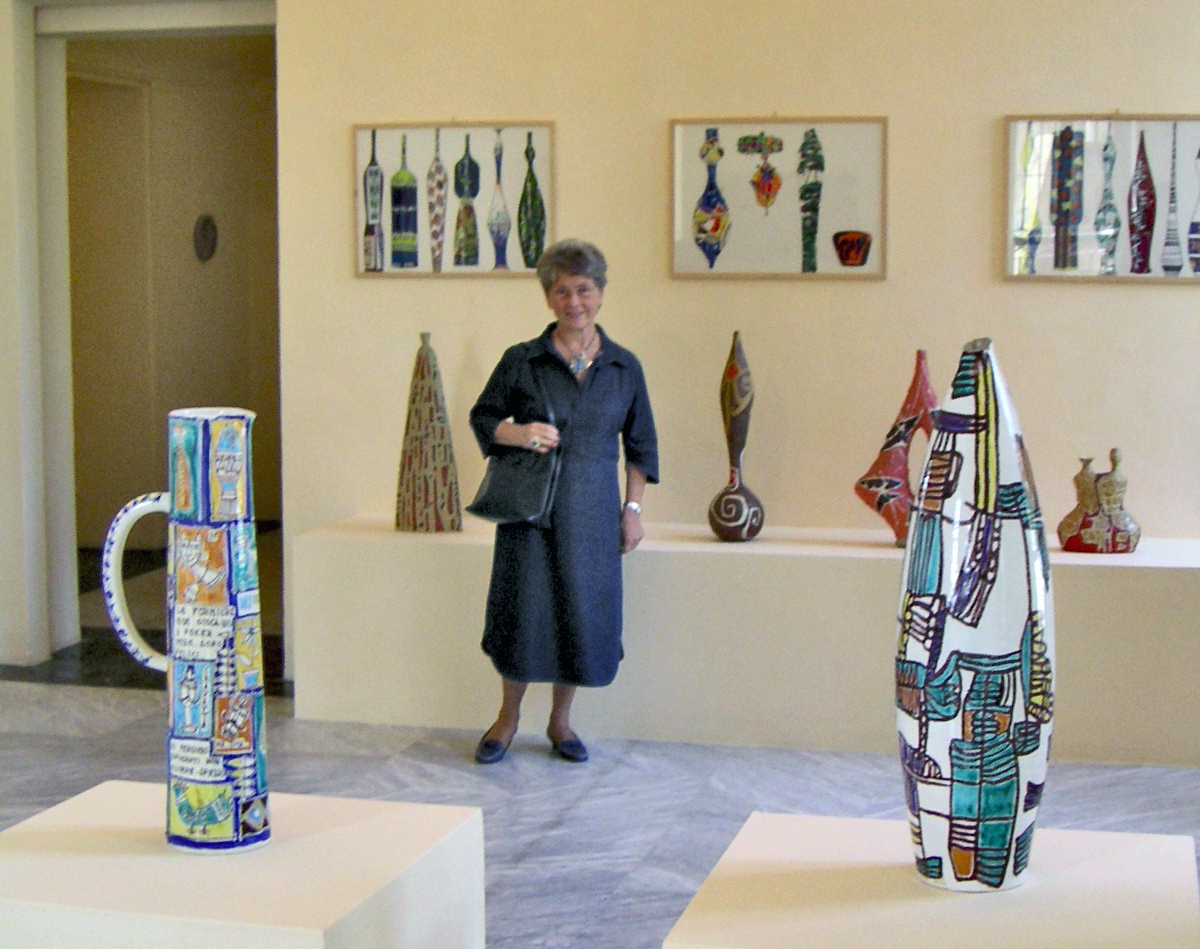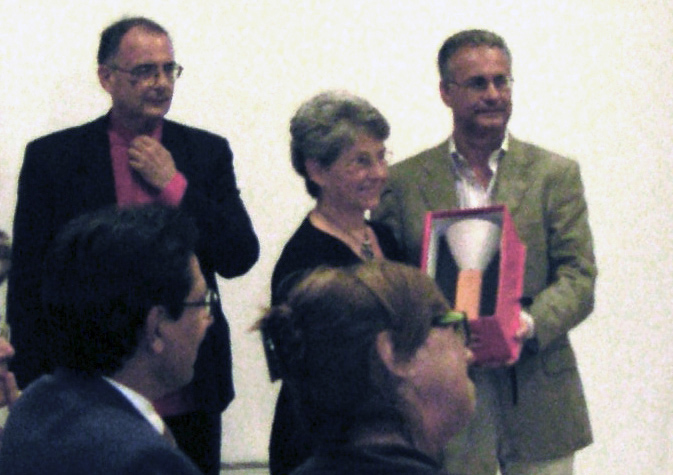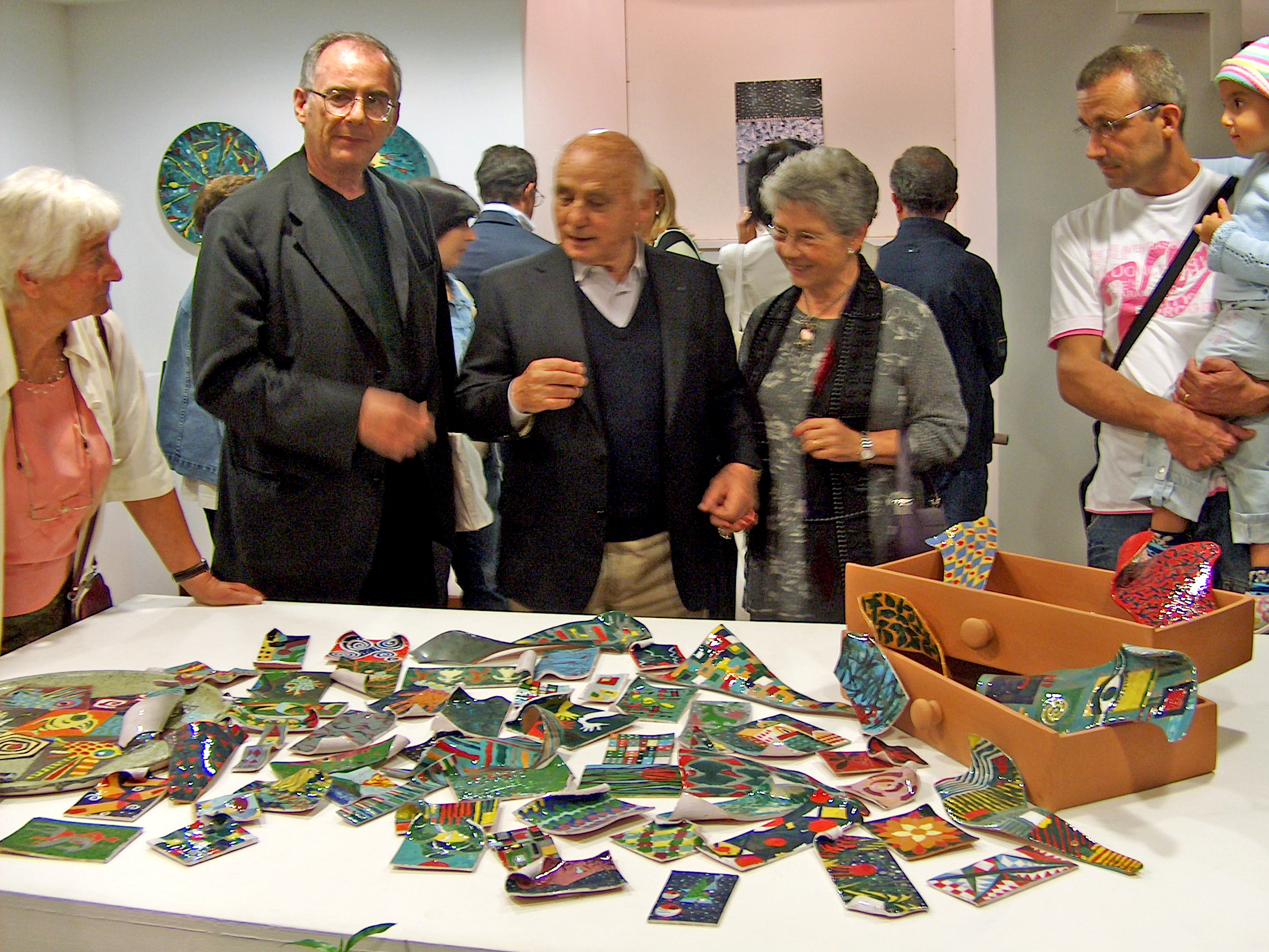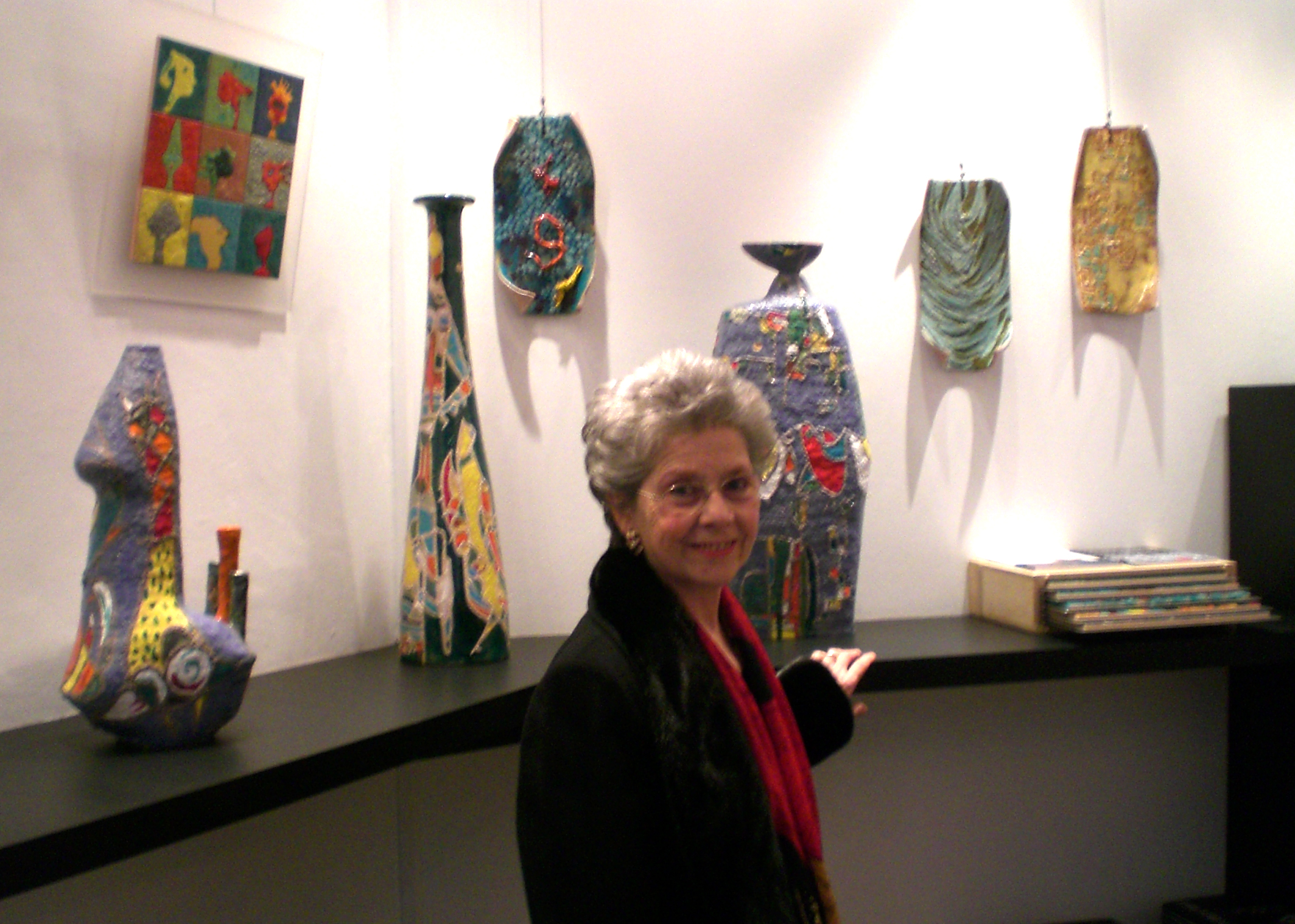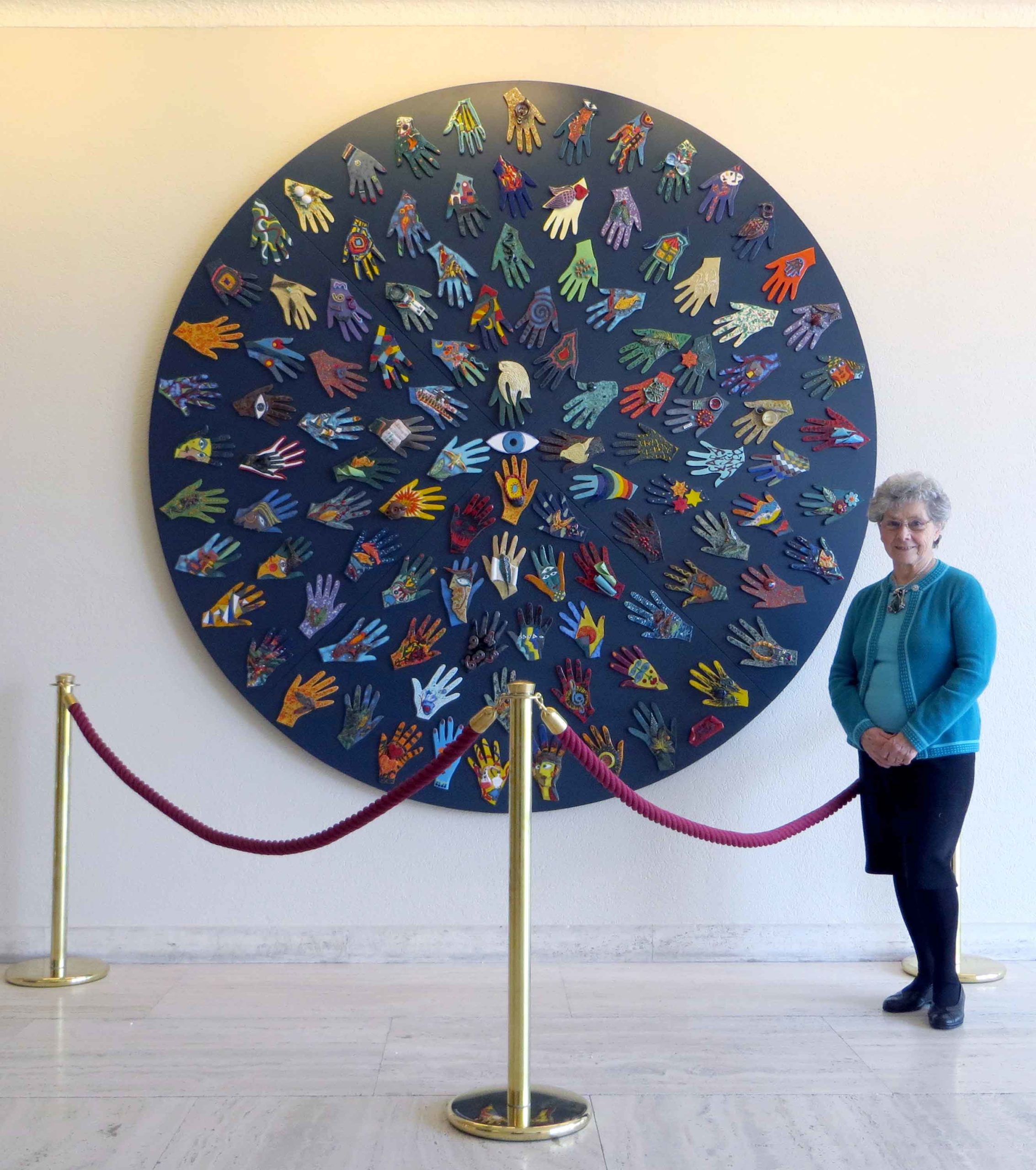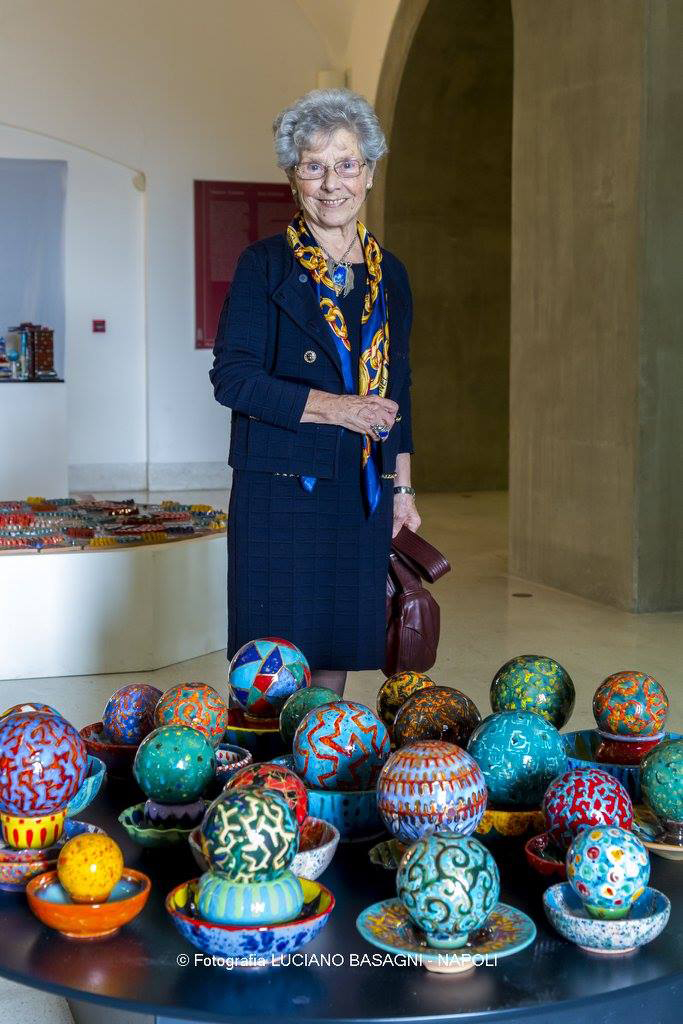biographical notes / Note biografiche
Clara Garesio was born in Turin in 1938, where she began her training at the Civica Scuola d’Arte Ceramica under the leadership of W. Corallini. Encouraged by her brilliant results and by the natural pleasure she experienced in artistic creation, Clara Garesio continued her studies at the internationally most accredited school in the sector, Istituto Statale d’Arte per la Ceramica G. Ballardini (Art Institute) in Faenza, where the most important artists and masters of pottery art were teaching (A. Bucci, A. Biancini, G. Liverani, T. Emiliani). In these years (1952-57) the Art Institute was a veritable hotbed of artists, and its fellow students included many future protagonists of 20th-century pottery, such as H. Hedberg, A. Diato, N. Valentini, P. Spagnulo, G. Gaeta, A. Leoni, I. Sassi. In fact, those were years of great artistic ferment and Faenza, because of its workshops, the International Ceramics Museum (founded by Gaetano Ballardini in 1909), the Art Institute itself and the Premio Faenza (International Competition of Ceramic Art), was considered the world center for the flow of ideas, experiences and knowledge in the field of pottery and international art. In this stimulating and dynamic climate Clara Garesio was able unleashed her imagination and put her talent into play, developing a personal style that metabolized the lessons of the masters and the suggestions of contemporary art, reinterpreting them in a fluid and agile language that, thirty years later, would make E. Biffi Gentili referring Clara Garesio’s talent in terms of “an absolutely sensational ‘avant-garde’ abstract-decorative creative phase”. A talent that did not delay in receiving acknowledgments: in 1955 Clara Garesio received the M. Dalmonte Foundation Award, followed, in 1956, by the 1st Premio Faenza (student section), and 1st Award of the G. Ballardini Foundation (1957).
After completing his master’s degree in 1957, Clara Garesio returned to Turin, where she worked with the ceramist V. Cerrato and then at the VI.BI (ceramics factory). In the same year, she was asked to teach at the Istituto Statale d’Arte G. Manuppella in Isernia, directed by the ceramist G. Saturni. She devoted herself to teaching with enthusiasm and dedication. During this period, she designed and realised, in continuous experimentation, an enormous number of pieces that represented the State Institute of Art in the national and international competitions of that time, such as the Premio Faenza, the Premio Marche, the Mostra Nazionale Castelli, and the Premio Lerici. Although she did not exclude other types of ceramics, her works had the archetypal form of the vase as its central theme, with a tendency to go beyond the idea of the container object in favor of more autonomous and sculptural morphologies, accompanied by the elaboration of new surface values and the experimentation of new languages and techniques: painted and/or graffitied majolica for the turned vases; textured enamels – obtained by combining oxides with various materials – for the columbine vases. In addition to her executive activity, her commitment to design is notable, with the design of modules for wall tiles, ornamental parties and pottery shapes. This activity is today documented by a significant corpus of ceramic works and drawings, mostly owned by the artist and in smaller quantities acquired by the MIAAO Museum in Turin and by the Museo Artistico Industriale in Castellamonte.
In 1962 Clara Garesio arrived in Naples, being selected from the Italian Minister of Education to set up the Istituto Professionale di Stato per l’Industria e l’Artigianato della Porcellana G. Caselli, directed by the ceramist G. Baitello. Thus, began a new stimulating creative season during which Clara Garesio focused on the rediscovery of porcelain in comparison with its glorious Capodimonte’s production. The new context in fact stimulated Clara Garesio to adopt a more accurate and controlled approach to the material, which permitted to concentrate the volcanic energy of her previous expressive phase in signs and gestures of calibrated effectiveness and sensibility. Her touch became precise and meticulous, but no less light and sure, and, alongside “pure invention”, Clara Garesio devoted herself to the disciplined reinterpretation/innovation of the traditional iconographic and stylistic heritage. As during the previous period in the Institute of Isernia, Clara Garesio integrated art and design with teaching due to the collaborations with ceramics factories and to the participation of the Institute in national and international competitions and exhibitions (among others, the fairs at Mostra d’Oltremare in Naples and the Mostra dell’Artigianato in Florence, where in 1966 one of her coffee services realized in porcelain won first award).
For about forty years Clara Garesio combined her teaching with her own work on reliefs and painted panels; she realized ceramic works for architecture and, in collaboration with her husband, the sculptor Giuseppe Pirozzi, she was several times winner of national competitions for works of art destined for public spaces. She took part in design groups and created artistic stained glass and ornamental plastics. She continued to devote herself to an intense activity of production and design of ceramic artifacts, also in collaboration with porcelain manufacturers in Capodimonte and with faience manufacturers on the Amalfi Coast.
She also continued her research in the field of graphics and painting, with drawings and paintings on paper, canvas, glass and ceramics. In the wake of a natural sensitivity to the material traces of memory, she developed the strand of assemblages: compositions of elements taken from everyday life (mostly in ceramics), generally discarded materials from work processes or relics of other people’s lives bought at markets, to which she gave “a second life”. This research involves various materials, a part from ceramics, wood, plastics, textiles, metal ornaments and gems, resulting in objects for use or decoration, such as furnishing accessories and bijoux, or works with a purely aesthetic function, such as a series of aedicules of devotional inspiration, including a specimen acquired by the permanent collection of the MIAAO Museum in Turin.
Since the early Nineties she devoted herself more intensively and continuously to independent artistic production and strengthened her liaison with the art of fire through the almost exclusive creation of clay works. Alongside the vase, plate and relief typologies, in this most recent creative season she developed new families of artistic objects, through which she gradually appropriated larger physical spaces and meaning. She created small series of unique artifacts, ranging from tiles to perforated plates, Faces, Hands, up to the more complex Notebooks, Boxes of Wonders, Still Life, or installations with a geometric layout, such as Mandalas, or compositions of elements, freely arranged in space, such as Notes, Dream Architectures, Celestial Bodies, up to the more recent Flowering is the end and In the Moonlight.
Since 2000s, Clara Garesio re-initiated interacting with a wider public of estimators and collectors through exhibitions, which re-earned the interest and recognition by critics. In 2005, she was awarded the 1st Prize of the Premio Internazionale Terra di Piemonte for Ceramic Art and she was celebrated with a solo-exhibition at the Museo Artistico Industriale di Castellamonte on the occasion of the 45th Exhibition of Ceramic Art; in the same year her works entered the MIAAO Museum in Turin. In 2006 she was awarded the Career Exhibition Award Viaggio attraverso la ceramica of the Museo Artistico Industriale M. Cargaleiro in Vietri sul Mare; in 2018 she was awarded honorary citizenship for artistic merit by the Municipality of Atrani (on the Amalfitan Coast). In the meantime, she took part in a number of national and personal exhibitions: Ceramiche – timeless glamour at the Terre d’Arte gallery in Turin and Con-Creta-Mente at Villa Rufolo in Ravello in 2007, 1 passione, 2 mani, 3 elementi… Clara Garesio! at San Salvatore de Fondaco in Salerno in 2009, Una infinita primavera at the Museo della Ceramica di Villa Guariglia in Vietri sul Mare in 2015, Fiorire è il fine at the Museo Duca di Martina in Naples in 2016, accompanied by a monograph edited by F. Bertoni; Circle Time in Faenza in the setting of Argillà 2018, Mirabilia e naturalia: ceramics and papers at the Casina delle Civette in Rome in 2019, Genesi at Museo Provinciale Campano di Capua in 2023. In 2019 and 2022 Clara Garesio was among the four masters honored by the national biennial of ceramic sculpture Keramikos.
Meanwhile, in 2010 the MIC in Faenza assimilated his great work Blue Mandala into its collections and other of his creations found their way into various museum institutions, including: Museo Duca di Martina in Naples, Museo della Ceramica di Villa Guariglia in Vietri sul Mare, Museo d’Arte Ceramica in Ascoli Piceno, Museo della Ceramica Castello Episcopio in Grottaglie, Museo Artistico Industriale in Castellamonte, Museo della Ceramica in Deruta, Museo Città Creativa in Ogliara Salerno, Museo Provinciale Campano di Capua, Raccolta Internazionale d’Arte Ceramica Contemporanea in Castelli, Museo d’ARte Contemporanea in Cerreto Sannita, Museu da Marioneta in Lisbon and Museo M. Cargaleiro of Castelo Branco (Portugal), Municipality of Atrani, Raccolta Omeoart Boiron di Segrate, Museo d’Arte Presepiale di Rivisondoli, Collezione d’Arte Contemporanea-mente di Grosseto, Archivio Ibridifogli di Salerno, Archivio ad – Arte in Dimora di Atri.
In 2013, the European Union acquired her large work In women’s hands, which was donated to the UN and installed in the Palais des Nations in Geneva, and her Imagining In women’s hands, which inaugurated the European Union’ contemporary art collection in the EEAS headquarters in Brussels.
Since 2021 she is a member of IAC (International Academy of Ceramics).
About Clara Garesio’s work wrote, among others, E. Alamaro, F. Bertoni, E. Biffi Gentili, M. Cargaleiro, G. Cefariello Grosso, A. Cilento, E. Dellapiana, L. Fiorucci, L. Hockemeyer, Muky, A. Pansera, M. Roccasalva, V. Sgarbi, J.I. Wroebel.
Clara Garesio is still teaching ceramics at the Società Umanitaria in Naples, while she constantly is continuing devoting herself to clay creation, entrusting art with a life-giving value of the existential dimension and pouring into her creative activity that expressive need for meaning and that passion for research, which are vital for every artist and which, for everyone, represent the secret of joy in their work.
